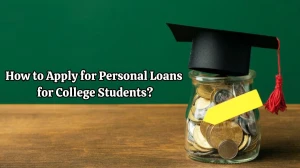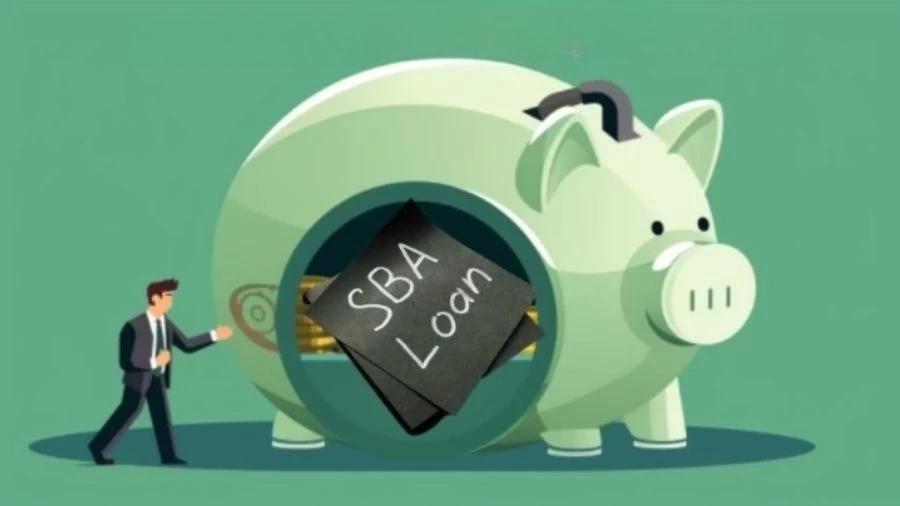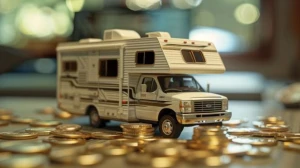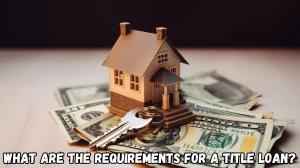
SBA Doubles Loan Limits, What is an SBA Disaster Loan?
SBA doubles disaster loan limits, boosting financial aid for homes to $500,000 and personal property to $100,000, while removing landscaping loan limits for more effective disaster recovery support.
Updated Jan 22, 2024
On This Page
SBA Doubles Loan Limits
The Small Business Administration (SBA) is implementing substantial changes to its disaster loan program, doubling the maximum limits to offer more robust assistance. Specifically, the cap for disaster loans related to homes is increasing from $200,000 to $500,000, while loans for replacing personal property are rising from $40,000 to $100,000. Notably, there will no longer be limits on landscaping loans.
These adjustments are designed to provide increased financial support for individuals coping with the aftermath of disasters, showcasing the SBA's commitment to enhancing aid for both businesses and individuals during unforeseen events.
The move aligns with the SBA's broader strategy to fortify support mechanisms and underscores its dedication to facilitating comprehensive recovery efforts. By addressing the evolving needs of those affected by disasters, the SBA aims to contribute significantly to the overall resilience of businesses and communities in the face of unforeseen challenges.
What is an SBA Disaster Loan?
The SBA Disaster Loan program serves as a crucial lifeline for individuals, businesses, and nonprofits grappling with the aftermath of officially declared disasters, ranging from hurricanes and floods to wildfires and tornadoes.
What sets this initiative apart from other SBA loan programs is the direct lending approach, where the SBA extends loans directly to provide essential long-term recovery assistance. These loans play a pivotal role in supporting the repair or replacement of disaster-damaged homes, real estate, and personal property, aiding in the restoration of normalcy for those affected.
How to Apply For a Small Business Disaster Loan?
Navigating the application process for a Small Business Disaster Loan is crucial for those dealing with the aftermath of disasters. In three simple steps, check eligibility, apply online, and collaborate with a case manager to streamline assistance and ensure a smoother recovery journey. These key steps demystify the process, offering a clear roadmap for accessing vital financial support.
- Ensure you are in an officially declared disaster area to qualify for assistance.
- Visit the loan program's website and complete the application online. This streamlined process enhances accessibility.
- Collect essential documents, including personal and financial information, to expedite the application process.
- Applying for a disaster loan might make you eligible for additional aid, such as grants. Explore all available options.
- You can apply for the loan even if your insurance claim is pending. However, any insurance payouts must be used to repay the loan.
- Send in your application online and track its progress on the website for transparency and updates.
- Anticipate a credit check and a property inspection as part of the evaluation process.
- The government aims to provide a decision within a few weeks. If approved, you'll receive signing papers.
- Receive the first portion of the loan within a few days, with potential initial disbursement for businesses to kickstart recovery efforts.
- Collaborate with a case manager assigned to you. They will guide you through managing the rest of the funds and navigating the subsequent steps in the recovery process, ensuring a comprehensive and supportive approach
How Does SBA Disaster Loans Work?
The SBA facilitates disaster recovery through low-interest loans tailored for businesses and homeowners in officially declared disaster areas. These loans, including Home, Business/EIDL, Non-profit, Stand Alone EIDL, and Military Reservist EIDL, address gaps left by insurance and FEMA assistance.
Amount and Terms
- Economic Injury Disaster Loans offer up to $2 million to businesses.
- Repayment terms extend up to 30 years.
Interest Rates, Fees, and Repayment
- Interest rates are 2.75% for non-profit entities and 3.75% for for-profit entities.
- No fee for loans under $25,000; a $100 processing fee for loans above.
- Repayment starts 12 months after fund receipt.
Collateral Requirements
- Loans below $25,000 require no collateral.
- For loans above $25,000, no specific collateral is needed; a personal guarantee and a blanket UCC-1 filing suffice.
What Are the Types of SBA Disaster Loans?
The Small Business Administration (SBA) provides a range of disaster loan options to cater to diverse needs arising from various emergencies. These include:
Home Disaster Loans
- Aimed at homeowners, these loans assist in repairing or replacing damaged real estate.
Business/Economic Injury Disaster Loan (EIDL)
- Geared towards businesses, this loan helps cover operating expenses and economic losses resulting from a declared disaster.
Non-profit Disaster Loans
- Designed for non-profit organizations, these loans support the recovery of facilities and operations affected by disasters.
Stand Alone EIDL
- This type of loan is available for businesses that don't qualify for a Physical Business or Home Disaster Loan but still face economic hardships due to the disaster.
Military Reservist EIDL
- Specifically tailored for businesses impacted when essential employees are called to active military duty.
SBA Doubles Loan Limits - FAQs
1. Why did the SBA double the disaster loan limits?
The SBA increased limits to provide more substantial financial assistance to individuals, businesses, and homeowners affected by disasters, aiming to better cover losses and support recovery efforts.
2. What are the maximum limits for disaster loans?
The maximum limits have been raised significantly, with home disaster loans increasing to $500,000 from $200,000, personal property replacement limits rising to $100,000 from $40,000, and landscaping limits being removed.
3. How does this benefit businesses and homeowners?
The increased limits offer greater financial support, enabling businesses to recover and rebuild with loans of up to $2 million, while homeowners can receive up to $500,000 for home-related damages and improvements.
4. What does the SBA aim to achieve through these changes?
The SBA seeks to ease financial burdens on disaster survivors, enhance recovery, and adapt to diverse disaster scenarios.
5. Are there changes in interest rates and repayment terms with the increased limits?
The interest rates remain at 2.75% for non-profits and 3.75% for for-profits.
6. Who is eligible to apply for an SBA Disaster Loan?
Small businesses, non-profit organizations, and homeowners in declared disaster areas can apply.




